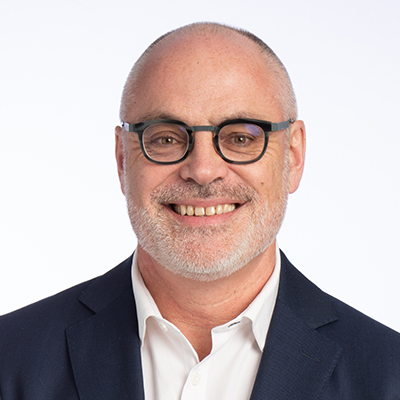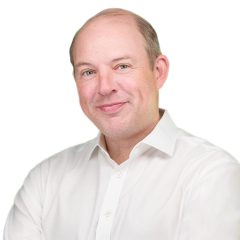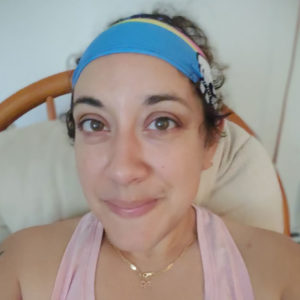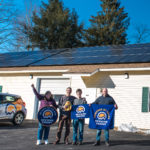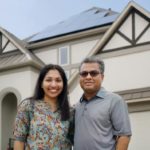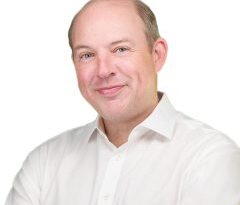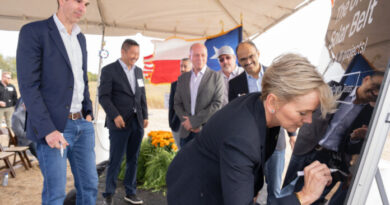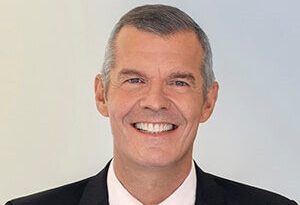It’s Not About Time. It’s About Relationships
 This month’s guest contributor is Janice R. Torres (Puerto Rican Taino), a full-time writer, storyteller, and former music maker. She has contributed to writing blogs as well as several online health & fitness publications and blogs, mainly focusing on ways to maintain a healthy mindset. When not working on freelance content, you can find her, red pen in hand, editing her first novel.
This month’s guest contributor is Janice R. Torres (Puerto Rican Taino), a full-time writer, storyteller, and former music maker. She has contributed to writing blogs as well as several online health & fitness publications and blogs, mainly focusing on ways to maintain a healthy mindset. When not working on freelance content, you can find her, red pen in hand, editing her first novel.
In Indigenous cultures, there are words for everything.
How the sun moves, what to call a particular bit of scrub bush, even a person missing any or all teeth (In Taino, it’s mahite).
Indigenous languages are both linguistically complex and widely varied, even within clans and families. There are subtleties and nuances that demonstrate relationships in a way that is unavailable in English. But there is one word in the English language that has no direct equivalent in any of them.
Nature.
 Some may think it makes no sense for Indigenous cultures around the globe not to have come up with a single word that describes the natural world around them. But, it is important to understand how different peoples relate to their environment.
Some may think it makes no sense for Indigenous cultures around the globe not to have come up with a single word that describes the natural world around them. But, it is important to understand how different peoples relate to their environment.
Dr. Luca Coscieme, Research Fellow in the School of Natural Sciences at Trinity College in Dublin states, “When we refer to ‘nature and ‘the environment’, we tend to assume that every one of us has a pretty similar understanding. The words we use to express our understanding of the world have a very contextual meaning, which is shaped by our past and present experiences, our moral values, and our culture, and the same is true for the stories we tell by these words.”
Recently I came across an article in the New York Times about the Metronome art installation clock located across from Union Square in New York. Recently, it changed from marking time in its own unique way to a more ecologically sensitive approach. A Climate Clock, they called it.
The time we have left to change how we have been treating the world around us. To prevent catastrophic events from becoming inevitable. Many environmental enthusiasts and scientists have dubbed it the Doomsday Clock.
Accelerated climate change is not a new occurrence, not something that began in the last fifty years or so. It is an accumulation of human driven events and decisions made throughout time. Throughout history.
Our history.
And it comes from one thing: our inability to see that we do not live in nature. We are nature. We are not separate from the living world around us. We are an equal part of it.
 “Indigenous people view both themselves and nature as part of an extended ecological family that shares ancestry and origins,” writes Enrique Salmón, author of Kincentric Ecology: Indigenous Perceptions of the Human-Nature Relationship. “It is an awareness that life in any environment is viable only when humans view the life surrounding them as kin. The kin, by and, in turn, affect the life around them. The interactions that result from this “kincentric ecology” enhance and preserve the ecosystem. Interactions are the commerce of ecosystem functioning. Without human recognition of their role in the complexities of life in a place, the life suffers and loses its sustainability. Indigenous cultural models of nature include humans as one aspect of the complexity of life.”
“Indigenous people view both themselves and nature as part of an extended ecological family that shares ancestry and origins,” writes Enrique Salmón, author of Kincentric Ecology: Indigenous Perceptions of the Human-Nature Relationship. “It is an awareness that life in any environment is viable only when humans view the life surrounding them as kin. The kin, by and, in turn, affect the life around them. The interactions that result from this “kincentric ecology” enhance and preserve the ecosystem. Interactions are the commerce of ecosystem functioning. Without human recognition of their role in the complexities of life in a place, the life suffers and loses its sustainability. Indigenous cultural models of nature include humans as one aspect of the complexity of life.”
So, how can kincentric ecology be implemented to change that we are running out of time?
Industrialized society has been built upon the biblical notion of “having dominion over the earth” and to “subdue it”.
Indigenous creations stories teach us that we are part of the fabric of this world and to work in right relationship with the living world around us. In many ways, Western science is now demonstrating the reality of what our Indigenous ancestors said all along: We are all related.
This does not mean we abandon our homes, no longer shop in grocery stores for our food, or stop driving our cars. It means we must find a way to utilize those things in sustainable ways and not sacrifice the living world around us. It means developing a kinship with the beings that surround us every day rather than taking them for granted.
Leslie Marmon Silko, Laguna author and poet states it perfectly. “Human beings must maintain a complex relationship with the surrounding natural world if they hope to survive in it.”
Fortunately, we have already begun the work.
When companies and homes use things like wind and solar energy, we are in right relationship with our world. We are harnessing the elements that flow freely around us. We are not depleting earth’s resources, but taking advantage of the infinite gift it provides. These things allow the ecological system to heal, the earth to replenish itself, and at the same time offers humanity a sustainable future.
When we do that, the need for time to repair our planet is erased.
And so is the need for a Climate Clock.
Original Source: https://www.revisionenergy.com/blogs/bipoc-series-torres/
